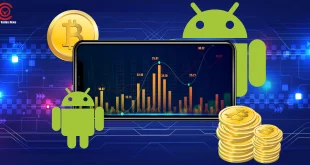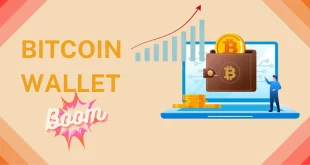The huge success of the use of NFT (non fungible tokens) over the past quarters is remarkable. Hence, we are not amazed to see a prevailing innovation trend in the NFT space in this respect, especially for new artists and traders. Today we will understand NFT lazy minting practice in detail which is an innovative concept that has recently become famous in the blockchain space.
What Is Minting?
Before understanding NFT lazy minting, it is important for you to understand what is minting. Anyone who is familiar with the idea of digital currency mining operations will not be facing any issue understanding how minting operates. In respect to blockchain, minting implies validating data, formulating a new block, and recording the data in a chain.
We can think of mint as a portion of the complete mining process in the digital currency system. For instance, when a new block is included in the chain of the Bitcoin, the system mints several new Bitcoins. So if you are wondering how to mint an NFT, there are various guides that will help you to do so. Using this process in the context of our article, the formation of an NFT comprises a minting operation. Without any further technicalities, we can summarize the complete minting process as follows:
- Intelligent contract design: to mint non fungible tokens, you are required to have a smart contract designed to do so. Luckily, you are not required to be a blockchain developer to conduct the operation: NFT marketplaces do have smart contracts.
- Transaction fees: if you have enough knowledge about the blockchain, you will expect to pay a gas fee to write the latest data in the system. In the real minting process, this is indeed what occurs.
- Sell your NFTs: you can sell your non fungible tokens on the marketplace of your choice at the end of each minting process. Keep in mind that the number of marketplaces is rising, and each of them arrives with varied minting offers.
The short piece of data we stated above is enough to give you a complete overview of the minting procedure. In the following section, we will introduce the NFT lazy minting approaches and illustrate the primary reasons behind its success.
The Success Of NFT Lazy Minting
Have you ever fulfilled a transaction on the Ethereum network? If your answer is yes, you will be accustomed to the high gas fees of the protocol. To put it simply, the cost of transactions is so high on Ethereum as the network suffers from congestion problems.
While the crypto space waits for the release of ETH 2.0, anticipating a significant cost cut, minting on Ethereum stays expensive. Taking that into account, after more than a year, Ethereum asserted that its upgrade is halfway done, the market is searching for solutions.
In this respect, the NFT market niche arrived with the concept of lazy minting. Let us summarize the idea is, once again, three steps:
- Smart contract design: similar to traditional minting, lazy minting requires a specific type of smart contract. Various NFT marketplaces are beginning to adopt this methodology.
- Transaction fees: after signing the non fungible tokens with your private key, you will not pay any gas fee if you mint using this approach.
- Sell your NFTs: anyone purchasing your non fungible tokens will have to pay the cost for minting together with the selling price.
How can anyone add data to a chain like Ethereum without paying any gas fee? As you may anticipate, the answer is pretty straightforward: the initial NFT minting function is a mere illusion. When you launch the lazy minting function, the marketplace only formulates a portrayal of your NFT for sale purposes. This illusional creation is why marketplaces find lazy minting easy. It may seem that someone is benevolently letting you mint non fungible tokens for free, but it is not like that.
NFT Lazy Minting As A Solution To High Gas Fees
To evaluate the success better that is associated with lazy minting, we can think of the latest digital artists aiming to sell their work. However, with no prior connection in this space and limited funds for all the marketing campaigns selling the non fungible tokens may be challenging.
Artists may plan to release collections of NFTs with numerous artworks. Considering that minting on the Ethereum network may cost $100, it is convenient to see how minting is risky. All the artists who are struggling to sell their non fungible tokens will ultimately suffer a financial loss.
The process may discourage them and also eliminate the NFT marketplace. Encouraging lazy minting efficiently eliminates the financial loss chances.
Final Thoughts
This article evaluated the primary details of traditional and lazy minting functions in the NFT space. It is transparent how lazy minting works as an amazing solution to the notorious gas fee problem of Ethereum. However, it is evenly straightforward to evaluate how NFT lazy minting only provides a temporary solution to the issue.
To ignore distortions in the demand-supply balance on the NFT space, the globe waits for a substantial gas fee decline. Lazy minting may remain in the long term, even with lower gas charges. However, it may be risky to depend on it to sustain the latest NFT market exclusively.
- Which Is The Best Bitcoin Mining Software? - 03/08/2024
- Reddit NFT Airdrop: How To Participate In It? - 03/08/2024
- Senso Airdrop Deadline Inches Closer. How To Participate? - 03/08/2024
 Crypto Venture News One stop Crypto Track Down
Crypto Venture News One stop Crypto Track Down 






